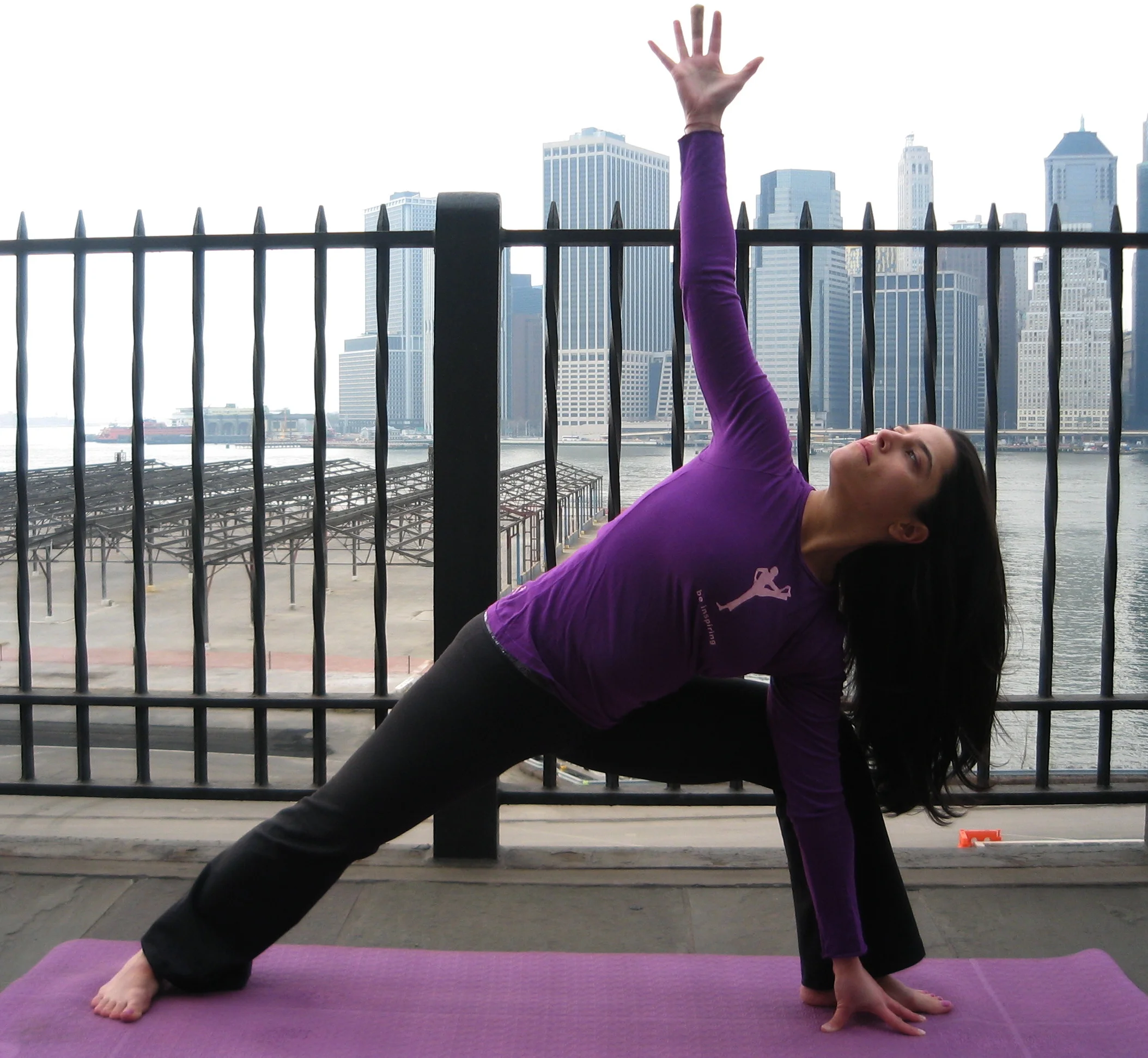Yoga*
Yoga comes from the root of the Sanskrit verb yuj which means to "yoke," "join," "hitch up," "harness," or "unite.
It can also be translated as union, divine union, relationship, connection, to add, or, to bring together.
Yoga is a process of spiritual, mental and physical transformation.
It is the union of the individual consciousness and the universal consciousness.
Yoga balances the subtle energies in the body, it awakens the chakras and the innate potential of the inner-self.
It is known to release physical, mental, energetic, emotional and psychological blocks that limit individual potential, thus allowing one to evolve and grow.
Yoga can bring a sense of calm, balance, and ease to practitioners through the harmony cultivated between the mind and body.
It can be useful in correcting physical ailments, reversing the aging process, increasing strength and flexibility, purification and detoxification of the body, toning muscle, regulating internal body function, and curing ailments and illnesses.
Yoga helps us to expand our understanding of ourselves through integration of the mind, heart, and body.
Namaste
A popular way to greet a fellow yogini or yogi and often the last word spoken to a close yoga class after chanting OM.
There are many different translations/interpretations, some include:
"There is a divine spark within each of us that is located at the heart chakra."
"I bow to you."
"The light in me greets the light in you."
"The divine in me recognizes/salutes the divine in you."
"I honor the place in you in which the entire universe dwells, I honor the place in you which is of love, of truth, of light and of peace. When you are in that place in you and I am in that place in me, we are one."
"The god/goddess in me greets and honors the god/goddess in you."
"I salute the divine qualities in you."
"My soul bows to your soul."
Asana
To sit.
To be.
Comfortable seat.
In Patanjali's Yoga Sutras, asana started to mean physical posture as well as the place where a yogi sits to meditate (the ancient yogi's meaning).
For the majority of the years yoga has existed, asana was simply the seated pose for meditation. Classical yogis were not going to vinyasa classes like we do, there were meditating in a seated cross legged position and studying with their gurus.
The physical postures we know today as asanas, have been created progressively over time, many quite recently - the timing is topic of much debate - but the vast majority of the poses are thought to have been developed in the last few hundred years. The postures were developed to make it easier to sit and meditate for long periods of time.
OM or AUM or OHM
The sound made in unison, by teacher and students, to open and close a yoga class.
It helps to center the energy in the room. Notice how you can still feel this energy, this vibration, even after the sound ends.
"A" the inner, "U" the outer, and "M" the super consciousness - are a representation of the three divinities. Three is a key number in yoga and in many sacred practices.
The one sacred sound from which all words originated.
OM comes from the sounds of nature and embodies them in its vibration.
The entire universe is moving, nothing is ever completely solid or still, everything pulsates creating a rhythmic vibration that the ancient yogis acknowledged with the sound OM.
It is the seed mantra, the bija mantra. Just as a tiny seed can contain a majestic tree, bijas contain vast amounts of spiritual wisdom and creative force.
It is the pranava, eternal, primordial seed of the universe.
It is the root mantra from which all other mantras emerge.
A followed by a U in Sanskrit coalesce to form a long O sound.
A - ah - symbolizes the waking state, subjective consciousness to outside world, lower body, abdomen, earth.
U - ooh - symbolizes dreaming state, consciousness of our inner world of thoughts dreams and memories, middle body, solar plexus, heart, middle region (between heaven and earth).
M - mmm - symbolizes dreamless state of deep sleep and experience of ultimate unity, head and skull, heavens above.
We are led through the three states of our ordinary consciousness to the mantra's fourth part, anusvara, the after sound. The vibration slowly dissolves into silence which is symbolic of the transcendent state of consciousness equated with the absolute, it is blissful and peaceful.
The resonance of OM is said to activate the seven chakras.
It is often noted that OM bears a resemblance to the word "Amen" used in many religions.
* A note on Sanskrit - Most words in Sanskrit have countless translations, interpretations, and explanations. They differ depending on particular viewpoint or lineage of teaching. Meanings of key terms and concepts have been debated by many scholars, often over thousands of years, and will vary by context and who is doing the interpreting. Yoga was traditionally taught as an oral history, passed on from the teacher to the student in conversation. Things started to be documented in written form along the way but there is no single text or translation that all yogis look to, there are numerous scriptures that are studied and even more translations. Much like a lot of things in life there is no black and white, no one correct answer. There are evolving viewpoints and debates you will hear over time - it's a good thing yoga is a life long practice! Listen to all that you hear with a student's fresh mind and decide for yourself what works and seems reasonable. The above is some of my favorite definitions, things I have heard from my teachers most often and thoughts on the key terms you will often hear bantered about in classes - they are by no means the only way to look at things.




